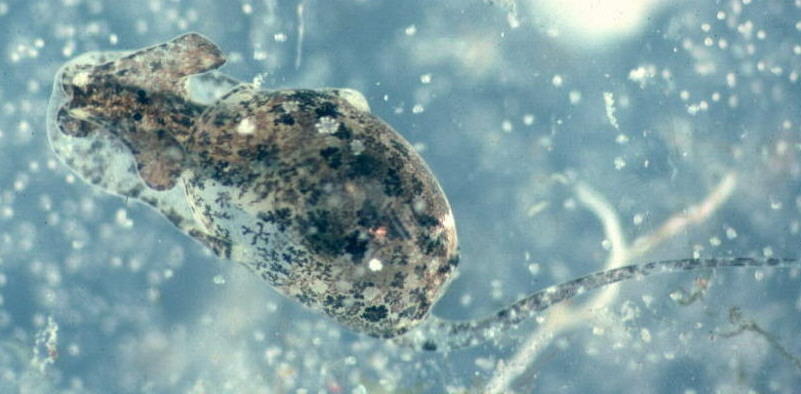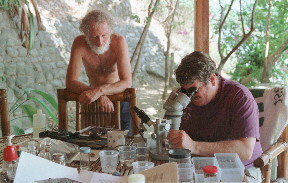
haminoeid sp.
haminoeid sp.(C.94)
The animal shown (C.94 - our code for the species) is 3.5mm long
w/o tail and has a shell that is about 2.4mm long. It is shown here on the egg mass
of Diniatys dentifera, another Haminoeidae. The egg mass turned out to
be a good photographic substrate -- the natural habitat would be the
blue-green algae,Microcoleus lyngbyaceus.
The specimen shown represents one of the 7 new species in a new 'miniham'
genus. These are all small 2 to 3.5mm animals that have a tail that may
extend from 5 to 12mm beyond the shell depending upon the species. At
least 2 of the species have an adhesive disk on the end of the tail. When
threatened the animal 'jerks' back to the point of attachment. Two
characteristics common among members of this group deal with the head
shield and eyes. The head shield on most Haminoeidae has 2 posterior
lobes that lie back on the anterior of the shell. With the 'minihams',
these lobes tend to point to the side. The specimen shown is one of the
least modified of the group. The eyes, commonly found buried within the
head, are on the surface in the 'minihams'. The shells of this group are
all very fragile, unmarked and exceedingly similar.
Patty Jo Hoff
Merizo, Guam
Photos and Text courtesy of Clay Carlson

Makeshift Laboratory Batangas, Philippines April, 1997
Send Clay mail at ccarlson@kuentos.guam.net |
© The Slug Site, Michael D. Miller 1998 All Rights Reserved.
